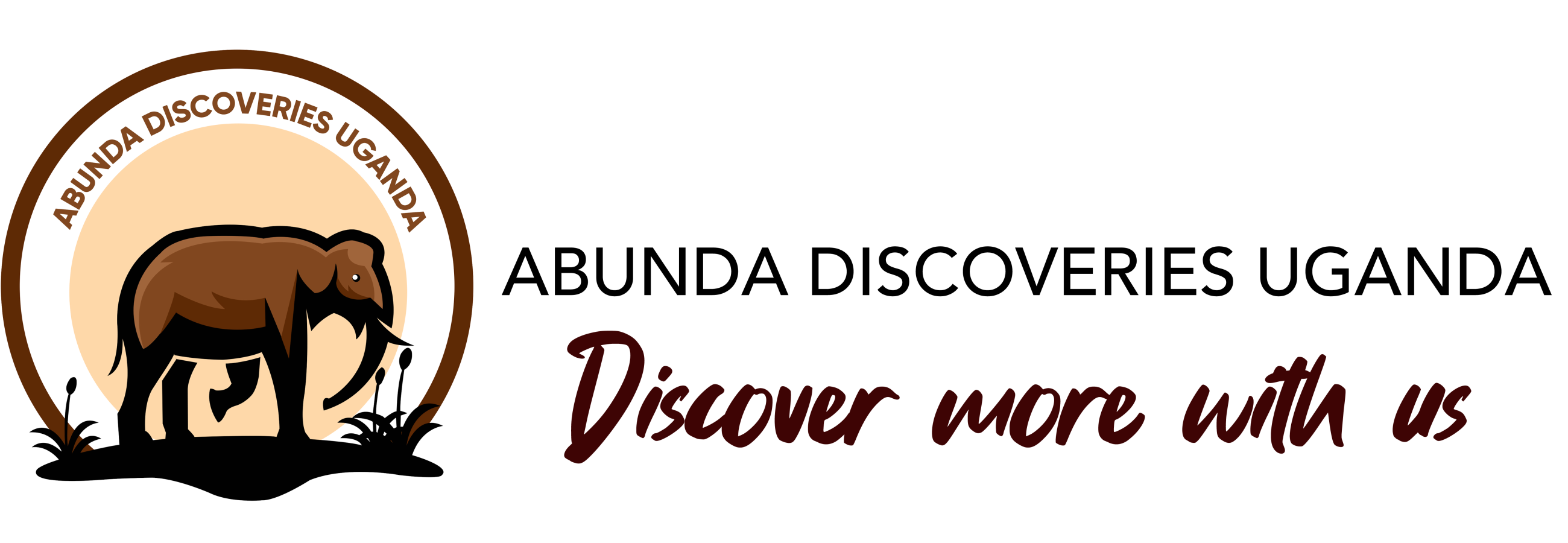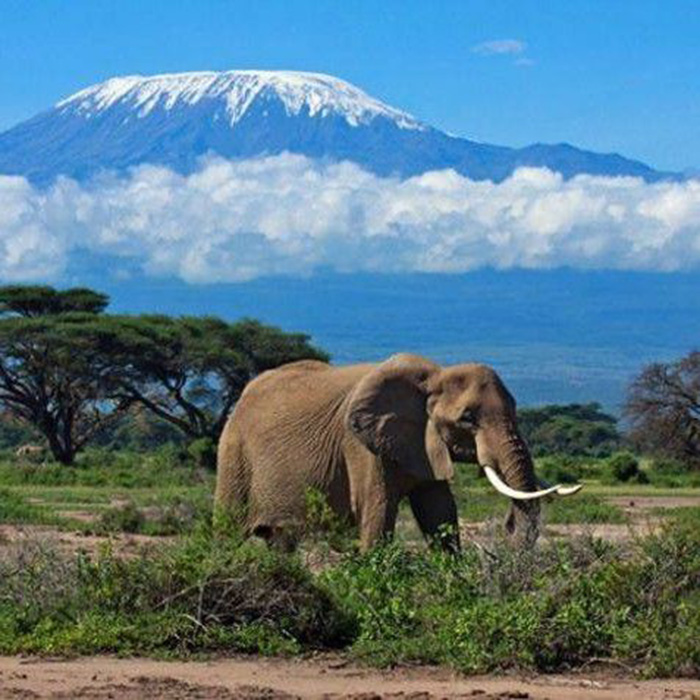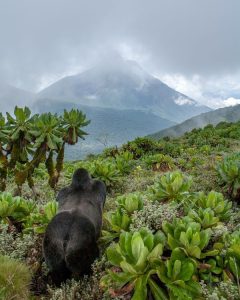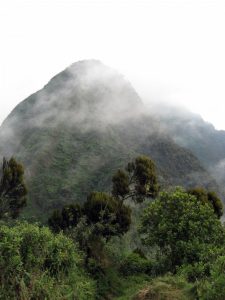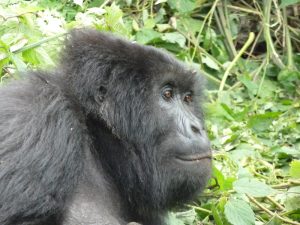Combined gorilla trekking tour and wildlife safari
East Africa isn’t just a destination; it’s a profound experience. For those yearning to witness the raw power of the wild and feel the humbling presence of our closest primate relatives, a combined gorilla trekking tour and wildlife safari is the pinnacle. This isn’t just another trip; it’s a meticulously crafted journey that blends thrilling game drives with intimate forest encounters, promising memories that will last a lifetime. Combined gorilla trekking tour and wildlife safari
Why Combine a Gorilla Trekking Tour with a Wildlife Safari in East Africa?
The question isn’t if you should combine these two incredible experiences, but why wouldn’t you? Imagine transitioning from the vast, golden plains teeming with iconic wildlife to the misty, emerald embrace of ancient rainforests, where critically endangered mountain gorillas roam. It’s an unparalleled blend of majesty and intimacy.
What are the benefits of experiencing both gorilla trekking and classic safaris?
The core benefit lies in the sheer diversity of wildlife encounters. A classic safari, particularly in Kenya or Tanzania, plunges you into the epic scale of the savannah. Here, you’ll witness monumental herds of wildebeest and zebras, with the iconic Big Five – lion, leopard, elephant, rhino, and buffalo – moving through their natural habitats. The annual Great Migration is a spectacle of millions of animals, a testament to nature’s grand design.
In stark contrast, gorilla trekking in Uganda or Rwanda offers an incredibly intimate and humbling experience. This isn’t a passive observation; it’s an active, guided trek through dense forests to spend a precious, unforgettable hour with a family of mountain gorillas. It’s a profound connection, where every shared glance speaks volumes about conservation and our place in the natural world. Combining these allows you to appreciate the full spectrum of East Africa’s biodiversity, moving from open plains to secluded forests, from exhilarating pursuits to quiet contemplation. Combined gorilla trekking tour and wildlife safari
Which countries offer the best combined gorilla and safari experiences?
While all four are incredible destinations, the most popular and logistically efficient combinations typically involve Uganda or Rwanda for gorilla trekking, paired with Kenya or Tanzania for classic safaris.
Uganda
The Pearl of Africa Often hailed as the “Pearl of Africa,” Uganda is a biodiversity hotspot. It boasts more affordable gorilla trekking permits than Rwanda and offers two primary trekking locations: Bwindi Impenetrable National Park and Mgahinga Gorilla National Park. Beyond gorillas, Uganda excels in diverse safari experiences. Queen Elizabeth National Park is famed for its tree-climbing lions and incredible boat safaris on the Kazinga Channel, teeming with hippos and birds. Murchison Falls National Park showcases the Nile River dramatically plunging through a narrow gorge. And for those seeking more primate encounters, Kibale Forest National Park is the undisputed “Primate Capital of the World,” offering exceptional chimpanzee trekking.
Rwanda
The Land of a Thousand Hills Rwanda provides a more premium gorilla trekking experience in Volcanoes National Park. While its permits are the most expensive, Rwanda’s excellent infrastructure and shorter travel times from the capital, Kigali, make it an attractive option for a luxurious or time-efficient trip. Rwanda also offers Akagera National Park for a Big Five savannah safari and Nyungwe Forest National Park for chimpanzee trekking.
Kenya: The Classic Safari Heartbeat Kenya is synonymous with the classic African safari. The Maasai Mara National Reserve is legendary for its vast plains, exceptional predator sightings, and being the stage for the annual Great Wildebeest Migration (July-October). Other top parks include Amboseli National Park, famed for its large elephant herds against the backdrop of Mount Kilimanjaro, and Lake Nakuru National Park, a vital rhino sanctuary. Kenya’s safari infrastructure is highly developed, offering a wide array of accommodation options.
Tanzania: Home of the Great Migration Tanzania is another safari powerhouse, home to the sprawling Serengeti National Park (also part of the Great Migration ecosystem) and the unique Ngorongoro Conservation Area, a UNESCO World Heritage site with a caldera teeming with wildlife. While Tanzania doesn’t host mountain gorillas, it can be seamlessly combined with gorilla trekking in Uganda or Rwanda via regional flights, often requiring a slightly longer itinerary.
What are the best East Africa safari and gorilla tour itineraries?
The “best” itinerary is subjective, but popular and highly recommended options typically range from 8 to 15 days, balancing intense primate encounters with expansive wildlife viewing.
Uganda-Kenya Combo (8-12 Days): This is a highly efficient and popular choice. Start by flying into Entebbe, Uganda. Dedicate 2-3 days for gorilla trekking in Bwindi and potentially 1-2 days for chimpanzee trekking in Kibale. You might add a short safari in Queen Elizabeth National Park. Then, take a regional flight from Entebbe to Nairobi, Kenya. Spend 3-4 days exploring the Maasai Mara for classic game drives, aiming to witness the Great Migration if your visit aligns seasonally (July-October). This itinerary offers a fantastic blend of primate and Big Five viewing without excessive travel time.
Rwanda-Kenya Combo (8-10 Days): For those prioritizing a premium gorilla experience and highly efficient logistics, fly into Kigali, Rwanda. Spend 2-3 days gorilla trekking in Volcanoes National Park. Then, take a regional flight from Kigali to Nairobi, Kenya, for 3-4 days of safari in the Maasai Mara or Amboseli. Rwanda’s smaller size means less driving time to the gorilla parks, which can be appealing.
Uganda/Rwanda-Tanzania Combo (12-15 Days): This more extensive itinerary involves flying to either Entebbe (Uganda) or Kigali (Rwanda) for gorilla trekking (3-5 days). Subsequently, take a regional flight to Kilimanjaro International Airport (JRO) in Tanzania. Dedicate 5-7 days to exploring Tanzania’s Northern Circuit, including Serengeti National Park (for the Great Migration if applicable) and the Ngorongoro Conservation Area. This option provides immense wildlife diversity but naturally requires more travel days and a larger budget.
How to plan a combined gorilla trekking and wildlife safari?
Define Your Priorities: Decide if gorillas, Big Five, or an equal balance is your primary focus.
Choose Your Countries: Select which countries you wish to visit (Uganda/Rwanda for gorillas + Kenya/Tanzania for safari).
Determine Your Budget: Gorilla permits, flights, and accommodation levels are the biggest cost drivers.
Select Travel Dates: Align your dates with optimal seasons for both activities (dry season for trekking, and Great Migration period for Kenya/Tanzania if desired).
Secure Gorilla Permits Early: These are limited and high-demand. Book them 6-12 months in advance, especially for peak season. Your tour operator will be instrumental here.
Find a Reputable Tour Operator: An experienced East Africa specialist is invaluable for handling logistics, permits, accommodations, and guiding. Look for strong reviews and expertise in both gorilla trekking and safaris.
Consider Internal Logistics: Plan the most efficient way to travel between countries and parks (e.g., regional flights vs. overland drives).
Consult a Travel Doctor: Get personalized advice on necessary vaccinations and malaria prophylaxis.
What is the ideal duration for a combined gorilla and safari trip?
While shorter trips like an 8-day Kenya-Uganda safari are feasible, an ideal duration for a truly fulfilling combined gorilla and safari experience is typically 10 to 15 days. This timeframe allows for:
3-4 days dedicated to gorilla trekking (including travel to/from the park and the trekking day itself).
5-7 days for a comprehensive safari in one or two major parks.
Buffer days for international and regional flights, and potentially some cultural immersion.
A 12 to 15-day itinerary offers a more relaxed pace, allowing for deeper immersion, less rushed travel, and potentially including chimpanzee trekking or additional safari areas. Combined gorilla trekking tour and wildlife safari
How much does a combined gorilla trekking and safari cost?
The cost varies significantly based on your choices.
Gorilla Permits: A major fixed cost. As of 2024-2025:
Uganda: $800 USD per person for a standard permit. A gorilla habituation permit (4 hours with gorillas) costs $1,500 USD.
Rwanda: $1,500 USD per person for a standard permit.
Chimpanzee Permits: In Uganda, a chimpanzee trekking permit in Kibale is typically around $250 USD.
Accommodation: Prices range from budget ($50-$150/person/night) to mid-range ($200-$500/person/night) and luxury ($600-$1500+/person/night).
Transportation: 4×4 safari vehicles, domestic and regional flights. Internal flights are more expensive but save significant travel time.
Park Fees: Varies by park and duration (e.g., Maasai Mara can be $70-$80 USD/person/day).
Tour Operator Fees: Typically 10-20% on top of operational costs for planning, bookings, and guiding.
International Flights: Not included in safari package prices.
General Estimates excluding international flights
Budget (basic accommodation, shorter trip): $3,500 – $6,000+ per person for 8-10 days.
Mid-range (comfortable accommodation, balanced itinerary): $6,000 – $10,000+ per person for 10-14 days.
Luxury (premium accommodation, private transfers, exclusive experiences): $10,000 – $20,000+ per person for 10-15 days.
You should confirm with the tour operator about the prices because in a due course these prices may vary depending on the season
What are the best times to visit East Africa for gorilla trekking and safaris?
The dry seasons are generally considered the best times for both activities, offering optimal conditions.
Dry Season (June to September & December to February):
Gorilla Trekking: Trails are less muddy and slippery, making the trek easier. While rainforests can experience rain any time, these months offer better chances of drier conditions, and gorillas are often easier to spot as vegetation is less dense.
Safaris (Kenya/Tanzania): Wildlife congregates around dwindling water sources, making game viewing easier and more concentrated. This period coincides with the Great Migration in the Maasai Mara (July-October) and Serengeti, making it peak safari season.
Shoulder Seasons (March-May & October-November): These periods offer lower prices, fewer crowds, and lush green landscapes. However, there’s a higher chance of rain, which can make trekking more challenging. Birdwatching, however, is excellent during these times due to migratory birds.
What are the visa requirements for a combined East Africa trip? (East Africa Tourist Visa)
For most nationalities visiting Kenya, Uganda, and Rwanda, the East Africa Tourist Visa (EATV) is highly recommended.
What it is: A single, multiple-entry visa valid for 90 days, allowing free movement between Kenya, Uganda, and Rwanda without needing separate visas for each country.
Cost: $100 USD per person.
How to apply: Apply online through the immigration portal of the first country you intend to enter. For example, if you start in Kenya, apply via the Kenyan e-visa portal.
Required Documents: Valid passport (at least 6 months validity beyond your intended departure date, with sufficient blank pages), recent passport-sized photo, detailed travel itinerary, return flight ticket, and, crucially, a Yellow Fever Vaccination Certificate.
Important Note: The EATV does not include Tanzania. If your itinerary extends to Tanzania, you will need a separate Tanzanian visa. Always check the latest visa requirements well in advance, as regulations can change.
What are the best places for gorilla trekking in Uganda?
Bwindi Impenetrable National Park: Home to over half of the world’s remaining mountain gorillas, Bwindi is Uganda’s premier gorilla trekking destination. Divided into four sectors (Buhoma, Ruhija, Rushaga, Nkuringo), treks can range from 1 to 8 hours depending on the gorilla family’s location. The experience is profoundly intimate.
Mgahinga Gorilla National Park: Part of the larger Virunga Massif, Mgahinga is a smaller park offering gorilla trekking and also golden monkey trekking. It’s the only park where you can track both.
What other wildlife and safari experiences does Uganda offer?
Queen Elizabeth National Park (QENP): Uganda’s most popular savannah park, known for diverse habitats and the famous tree-climbing lions of the Ishasha sector. A boat safari on the Kazinga Channel is a must-do, offering incredible opportunities to see hippos, crocodiles, and abundant birdlife.
Murchison Falls National Park: Uganda’s largest national park, bisected by the mighty Nile River. The eponymous Murchison Falls, where the Nile dramatically funnels through a narrow gorge, is a spectacular sight. Game drives and boat safaris are excellent here.
Kibale Forest National Park: Often called the “Primate Capital of the World,” Kibale offers the best chimpanzee trekking in East Africa, with 13 primate species in total.
Where can I go gorilla trekking in Rwanda?
Volcanoes National Park: Nestled in the Virunga Mountains, this park is Rwanda’s sole gorilla trekking destination, famously where Dian Fossey conducted her research. Its relatively good accessibility from Kigali (a 2-3 hour drive) and its reputation for a premium trekking experience make it highly sought after.
Are there other wildlife safari options in Rwanda?
Akagera National Park: Rwanda’s only savannah park, now a Big Five destination after successful reintroductions. It offers traditional game drives and boat trips.
Nyungwe Forest National Park: An ancient montane rainforest, renowned for its chimpanzee trekking and a unique canopy walk.
What are the top safari destinations in Kenya to combine with gorilla trekking?
Maasai Mara National Reserve: The jewel of Kenyan safaris, legendary for its vast plains, exceptional concentrations of wildlife year-round, and its role as the stage for the Great Wildebeest Migration. Offers unparalleled opportunities for seeing the Big Five.
Amboseli National Park: Famous for its majestic herds of elephants, often seen against the iconic backdrop of Mount Kilimanjaro.
Lake Nakuru National Park: A vital rhino sanctuary, offering excellent chances to spot both black and white rhinos, and a birdwatcher’s paradise.
What is the Great Migration, and how can I witness it?
The Great Wildebeest Migration is one of the most spectacular natural events on Earth: an annual circular movement of over 1.5 million wildebeest, 200,000 zebras, and numerous gazelles across the Serengeti (Tanzania) and Maasai Mara (Kenya) ecosystems. While timing is never 100% guaranteed, the peak time to witness the dramatic river crossings in the Maasai Mara is typically from late July to October.
Which Tanzanian parks offer the best wildlife viewing experiences?
Serengeti National Park: Tanzania’s most famous park, forming the larger part of the Great Migration ecosystem. Its endless plains host incredible wildlife densities and diverse predator populations.
Ngorongoro Conservation Area: A UNESCO World Heritage site featuring the world’s largest intact volcanic caldera, the Ngorongoro Crater. This natural amphitheater is a self-contained ecosystem with an incredibly high concentration of wildlife, including the Big Five.
How can I combine a safari in Tanzania with a gorilla trekking tour?
Combining Tanzania with gorilla trekking (in Uganda or Rwanda) usually involves regional flights from Arusha or Kilimanjaro (Tanzania) to Entebbe (Uganda) or Kigali (Rwanda). This adds travel time and cost but allows you to experience the vast plains of the Serengeti and Ngorongoro alongside the intimate rainforest encounters. It’s an excellent option for those with ample time and a generous budget.
Essential Activities and Experiences
Your combined safari will be packed with thrilling activities that go beyond just spotting animals from afar.
What is gorilla trekking, and what does it involve?
Gorilla trekking is a guided hike through dense rainforest to find a habituated family of mountain gorillas. It’s physically demanding but profoundly rewarding.
Process: After a briefing by park rangers, you’ll be assigned to a group (maximum 8 trekkers) and led by experienced guides and trackers. The trek can last anywhere from 1 to 8 hours, navigating through steep, often muddy terrain. Hiring a porter is highly recommended—it supports local communities and makes the trek much easier.
The Encounter: Once the gorilla family is located, you’ll spend a precious and strictly monitored one hour observing them. This includes watching them feed, play, groom, and interact. The feeling of being mere meters away from these magnificent creatures in their natural habitat is truly indescribable and often cited as a life-changing experience.
Rules: Strict rules are enforced to protect the gorillas, including maintaining a 7-meter distance, wearing face masks (sometimes required), keeping voices low, and not visiting if unwell. Combined gorilla trekking tour and wildlife safari
What are the different types of safaris available?
Game Drives: The most common safari activity, conducted in specially adapted 4×4 vehicles with pop-up roofs for optimal viewing and photography. Guided by experienced rangers, game drives allow you to cover vast areas and get close to wildlife.
Walking Safaris: Offered in select areas, these allow you to experience the bush on foot, focusing on smaller creatures, tracks, and the intricate ecosystem often missed from a vehicle. Always conducted with armed rangers for safety.
Boat Safaris: Popular in parks with significant water bodies (e.g., Kazinga Channel in Uganda), offering a unique perspective on wildlife, particularly hippos, crocodiles, and diverse birdlife.
Hot Air Balloon Safaris: A luxurious and unforgettable experience offered in select parks like the Maasai Mara and Serengeti. You float silently above the plains at dawn, often concluding with a champagne breakfast in the bush.
Night Game Drives: Offered in private conservancies and some national parks, these allow you to search for nocturnal animals, including elusive predators like leopards.
Are there opportunities for chimpanzee trekking in East Africa? (Kibale Forest National Park, Uganda)
chimpanzee trekking is a highly rewarding experience and a perfect complement to gorilla trekking.
Kibale Forest National Park (Uganda): This is considered the best place in East Africa for chimpanzee trekking, boasting a high success rate and a large, habituated population. Permits are significantly cheaper than gorilla permits.
Budongo Forest (Uganda): Located within Murchison Falls National Park, it offers another excellent chimpanzee trekking option.
Nyungwe Forest National Park (Rwanda): Also offers chimpanzee trekking, providing an alternative if you are focusing your gorilla trip in Rwanda.
Can I include cultural experiences in a combined gorilla and safari tour? (Maasai village visits, Batwa cultural experiences)
Absolutely! Integrating cultural encounters enriches your understanding of the region’s people and traditions.
Maasai Village Visits (Kenya/Tanzania): Near the Maasai Mara and Serengeti, you can visit authentic Maasai bomas (villages). These visits offer insights into their semi-nomadic lifestyle, vibrant clothing, traditional dances, and beadwork. Ensure these visits are respectful, ethical, and ideally support community initiatives.
Batwa Cultural Experience (Uganda): Near Bwindi Impenetrable National Park, the Batwa Pygmies (forest people) offer cultural tours. This allows you to learn about their ancestral way of life, traditional hunting techniques, and medicinal plants, providing a powerful perspective on conservation and indigenous communities.
Community Walks: Many lodges offer guided walks to local villages, providing opportunities to interact with residents, visit schools, or learn about local crafts.
City Tours: In cities like Nairobi (Kenya), Kigali (Rwanda), or Kampala (Uganda), you can explore local markets, historical sites (e.g., Kigali Genocide Memorial, Kasubi Royal Tombs), and vibrant cultural centers.
Practical Information and Preparation
Thorough preparation is key to a smooth and enjoyable East African adventure.
What essential items should I pack for a gorilla trekking and safari trip?
Packing light and smart is essential, especially for internal flights where luggage limits are strict (often 15-20kg in soft-sided bags). Combined gorilla trekking tour and wildlife safari
Clothing:
Neutral Colors: Khaki, olive green, brown, grey – to blend in and deter insects. Avoid bright colors and white (gets dirty quickly).
Layers: Temperatures vary. Include light long-sleeved shirts and pants (for sun, insects, and trekking), a warm fleece/jacket, and a waterproof rain jacket.
For Gorilla Trekking: Sturdy, waterproof hiking boots (broken in!), gaiters (highly recommended for mud/insects), tough long pants, and a waterproof jacket. Gloves are useful for grasping vegetation.
General: Comfortable walking shoes/sneakers, sandals, swimwear (if applicable).
Gear:
Binoculars: Absolutely essential for wildlife viewing!
Camera Gear: Camera with a good zoom lens (200-400mm recommended), extra batteries, plenty of memory cards, and a waterproof bag/cover.
Daypack: For daily excursions, carrying water, snacks, camera, and rain gear.
Reusable Water Bottle: Stay hydrated and reduce plastic waste.
Health & Personal:
Insect Repellent: High DEET content (30-50%) is crucial.
Sun Protection: High SPF sunscreen, lip balm with SPF, wide-brimmed hat, sunglasses.
Basic First-Aid Kit: Painkillers, anti-diarrhea medication, antiseptic wipes, bandages, antihistamines, rehydration salts.
Personal Medications: Any prescription medications, clearly labeled, with a copy of your prescription.
Hand Sanitizer and Wet Wipes.
Documents: Passport (valid for at least 6 months), visas, Yellow Fever certificate, travel insurance details, copies of all documents (kept separately), sufficient cash (USD and small local denominations).
What health and safety precautions should I take before and during my trip to Kenya and Uganda?
Prioritizing your health and safety is paramount for a worry-free safari.
Pre-Travel Medical Consultation: Consult a travel doctor 6-8 weeks before your trip.
Yellow Fever: Vaccination is mandatory for entry into Uganda and Rwanda, and often required for Kenya if coming from a Yellow Fever risk country. Carry your original certificate.
Malaria Prophylaxis: Both countries are malaria-risk areas. Discuss the most suitable anti-malarial medication with your doctor.
Recommended Vaccinations: Typhoid, Hepatitis A & B, Tetanus, Diphtheria, Polio, Rabies (especially if you anticipate animal contact).
During Travel:
Malaria Prevention: Adhere to your prophylaxis. Use insect repellent, wear long sleeves and pants in the evenings, and sleep under mosquito nets.
Food and Water Safety: Drink only bottled or purified water. Avoid ice unless you’re sure it’s from filtered water. Be cautious with street food; stick to reputable restaurants and freshly cooked meals.
Sun Protection: Reapply sunscreen frequently, wear a hat, and stay hydrated.
Wildlife Safety: Always follow your guide’s instructions. Never approach or feed wild animals. Stay inside your safari vehicle unless explicitly told otherwise.
Personal Safety: In urban areas, be vigilant. Avoid walking alone or displaying valuables. Use reputable taxis or hotel-arranged transport. In safari areas, you are generally very safe within lodges and guided activities.
Travel Insurance: Purchase comprehensive travel insurance that covers medical emergencies, emergency evacuation (especially important for remote safari areas), trip cancellation/interruption, and lost luggage. Ensure it specifically covers adventure activities like gorilla trekking. Combined gorilla trekking tour and wildlife safari
How do I handle money and currency during a combined Kenya and Uganda safari?
Currencies: Kenyan Shilling (KES), Ugandan Shilling (UGX), Rwandan Franc (RWF). US Dollars (USD) are widely accepted for major payments (safari costs, permits, high-end lodges, tips).
Cash: Carry sufficient USD cash, especially in small denominations ($1, $5, $10, $20) for tips, small purchases, and border fees (if applicable). It’s generally best to change a small amount of USD into local currency for minor expenses.
Credit Cards: Major credit cards (Visa, MasterCard) are accepted at most mid-range to luxury lodges and larger businesses. However, smaller establishments, local markets, and remote areas often only accept cash. Inform your bank of your travel plans to avoid card suspension.
ATMs: Available in major towns and cities, but can be scarce or unreliable in remote safari regions. Don’t rely solely on ATMs.
Tipping: Tipping is customary and a significant part of income for guides, drivers, porters, and lodge staff.
Safari Guides/Drivers: Typically $10-$20 USD per person per day (for group safaris) or $30-$50 USD per day for a private guide. Adjust based on service quality.
Gorilla Porters: Around $15-$20 USD per trek (highly recommended for assistance and support).
Lodge Staff (general tip box): $5-$10 USD per person per day.
Hand tips directly or use designated tip boxes.
What are the common modes of transport between and within Kenya and Uganda for tourists?
International Flights: Primary gateways are Jomo Kenyatta International Airport (NBO) in Nairobi, Kenya, and Entebbe International Airport (EBB) near Kampala, Uganda. Kigali International Airport (KGL) in Rwanda is also a key hub.
Regional Flights: The most efficient way to travel between these countries is by regional flight (e.g., Nairobi to Entebbe/Kigali). This saves significant time.
Domestic Flights: Within each country, charter or scheduled light aircraft flights are common for transferring between safari parks (e.g., Nairobi to Maasai Mara, Entebbe to Bwindi). These are faster but more expensive and have strict luggage limits.
Road Transfers: For internal travel and game drives, well-maintained 4×4 safari vehicles (usually Toyota Land Cruisers or similar) are used. Roads, especially in Uganda, can be bumpy and dusty/muddy, leading to long journey times. Your tour operator will arrange these.
Border Crossings: While possible by road (e.g., Busia/Malaba between Kenya and Uganda), for a guided safari, your tour operator will handle all the logistics, making border crossings smoother.
Are combined safaris suitable for families or solo travelers?
Family Safaris: Absolutely! East Africa offers fantastic family safari opportunities. Many lodges and camps are family-friendly, offering interconnected rooms, child-specific activities, and special menus. Kenya’s more developed infrastructure can be a good starting point for families. For gorilla trekking, a minimum age of 15 years is typically required in both Uganda and Rwanda, making it more suitable for families with teenagers.
Solo Travel: East Africa is a growing destination for solo travelers. While private safaris can be more expensive, many reputable operators offer group joining safaris, which are more budget-friendly and provide opportunities to meet other travelers. Safety is a priority for tour operators, and solo travelers are generally well-cared for. Combined gorilla trekking tour and wildlife safari
How does sustainable tourism play a role in combined Kenya and Uganda safaris, and why is it important?
Sustainable tourism is the bedrock of East Africa’s conservation efforts and vital for preserving its natural wonders and empowering local communities.
Conservation of Primates: Gorilla and chimpanzee trekking permit fees are a direct and significant source of funding for the protection of these endangered primates, supporting anti-poaching units, habitat preservation, and community outreach programs around the parks. Without these permits, conservation efforts would be severely hampered.
Community Empowerment: Responsible tourism practices ensure that economic benefits trickle down to local communities. This includes employing local guides, lodge staff, and porters; purchasing local goods and services; and investing in community projects like schools and health clinics. When communities benefit directly from tourism, they become active partners in conservation.
Minimizing Environmental Impact: Sustainable practices involve minimizing waste, conserving water and energy (many lodges use solar power), respecting wildlife space, and adhering to park regulations. Choosing eco-friendly lodges and operators committed to responsible tourism contributes to the long-term health of these fragile ecosystems.
Visitor Management
Strict limits on gorilla permits and controlled vehicle numbers in national parks are designed to minimize disturbance to wildlife and their habitats, ensuring a high-quality, intimate experience for visitors while safeguarding the environment.
When booking your safari, inquire about your tour operator’s commitment to sustainable tourism. Supporting ethical operations directly contributes to the preservation of East Africa’s irreplaceable wildlife and cultural heritage. Combined gorilla trekking tour and wildlife safari
How to choose a reputable tour operator for a combined gorilla and safari?
Look for operators with:
Specialization: Those specifically experienced in East African safaris and gorilla trekking.
Accreditation: Membership in recognized tourism associations (e.g., KATO in Kenya, AUTO in Uganda, RTB in Rwanda).
Reviews: Excellent reviews on platforms like TripAdvisor, SafariBookings, or Google.
Local Knowledge: Guides who are highly knowledgeable about wildlife, culture, and local conditions.
Safety Standards: Adherence to strict safety protocols for vehicles, accommodation, and activities.
Communication: Responsive and clear communication throughout the planning process.
Customization: Ability to tailor itineraries to your needs.
Sustainability Commitment: A clear policy on responsible and sustainable tourism.
What are the different accommodation options available? (Lodges, camps)
Lodges: Permanent structures, often resembling hotels, offering comfortable rooms, restaurants, and amenities like swimming pools. They can range from mid-range to ultra-luxury.
Tented Camps: Ranging from comfortable “semi-permanent” tented camps to ultra-luxurious “glamping” experiences. These combine the thrill of being close to nature with amenities like comfortable beds, en-suite bathrooms, and fine dining. They often offer a more authentic safari feel.
Budget Accommodations: Basic guesthouses or campsites, offering essential amenities for cost-conscious travelers.
How far in advance should I book my gorilla trekking permits?
Crucially, book gorilla trekking permits as far in advance as possible, ideally 6-12 months ahead of your travel dates. This is especially true if you are traveling during peak season or have specific dates in mind. Permits are limited (only 8 per gorilla family per day) and demand is very high, particularly for Uganda’s more affordable permits. Your tour operator will typically handle the permit acquisition once you confirm your booking and itinerary.
A combined gorilla tour and safari in East Africa isn’t just a vacation; it’s an immersive journey into the heart of the wild. By understanding the logistics, preparing adequately, and choosing responsible tourism options, you’re set to embark on an adventure that will leave an indelible mark on your soul. Are you ready to answer the call of the wild? Combined gorilla trekking tour and wildlife safari
